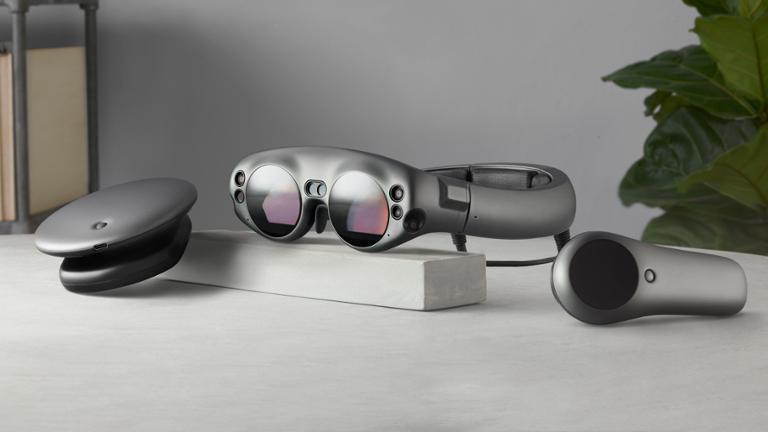Exactly a year ago, it seemed like augmented-reality startup Magic Leap was doomed. The once-promising startup, which had drawn billions of dollars in funding from some big players (including Google), was forced to lay off workers as part of a larger restructuring. Meanwhile, rumors suggested that the company was looking for a buyer—and nobody was interested.
Over the past twelve months, though, Magic Leap forgot to die. According to Protocol, the company is readying a second, lighter version of its headset for early adopters, with plans to make it generally available in early 2022.
Magic Leap CEO Peggy Johnson is betting the future of the company on enterprise customers, claiming in an interview with Protocol that the company’s executives previously tried to do too much by targeting both businesses and consumers. “With enterprise, you really need to fit into the workflows of companies,” she said. “You need to understand how to fit into their workflow, not to introduce a new technology and assume that they can adapt it. That has been a major focus since I took over.”
For those who don’t think an enterprise-focused strategy can translate into mainstream success, she also made the comparison to mobile phones, which were once largely limited to businesspeople: “It's very similar to the state of AR right now. The devices are still getting there. They're not quite right for consumers, but they're perfect for the enterprise. So that move to enterprise, to me, made a whole lot of sense.”
Magic Leap isn’t the only AR company focused on the enterprise. Microsoft recently announced that it had signed a deal with the U.S. Army to develop augmented reality systems based on its HoloLens 2 device. That contract is worth $21.9 billion over 10 years. In a corporate blog posting, Microsoft said that the “IVAS headset,” based on HoloLens and backed by Azure cloud services, “delivers enhanced situational awareness, enabling information sharing and decision-making in a variety of scenarios.”
Businesses are potentially more willing than individual consumers to pay between $2,200 (for the most basic Magic Leap headset) to $3,500 (for the HoloLens 2). If tech companies want AR headsets to go truly mainstream, though, they may have to issue devices that cost quite a bit less, paired with a robust ecosystem of software and games.
Current scuttlebutt suggests that Apple is currently hard at work on a pair of augmented-reality glasses, supposedly with a LIDAR scanner in the frames that will use laser light to measure and capture the wearer’s environment. If that hardware hits the market at a price-point that makes consumers comfortable, it could truly popularize the technology—and open up a whole new revenue stream for developers willing to build AR apps and games. Whether that would undermine other tech companies’ focus on the enterprise and more expensive devices, though, is a big question.
Sign Up Today
Want more great insights? Create a Dice profile today to receive the weekly Dice Advisor newsletter, packed with everything you need to boost your career in tech. Register now

